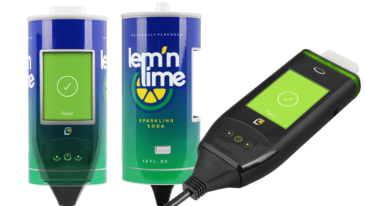
Ignition Interlock Device Laws: A Helpful Guide
The consequences of drinking and driving still remain a prevalent issue in the United States today. An estimated 29 people in the country die in car crashes that involve an alcohol-impaired driver every single day. That is one easily preventable death every 50 minutes.
Thankfully, states continue to enforce measures that can help to prevent deaths, injuries, and property damage from driving under the influence of alcohol. This includes 0.08 percent blood alcohol concentration laws, zero tolerance laws for drivers under the age of 21, and sobriety checkpoints.
Ignition interlock devices, or car breathalyzers, are one of the most effective tools in preventing drunk driving. While they were once reserved for specific cases, today they have become much more common, enough that some people install ignition interlock devices voluntarily. Currently, every state has some sort of an ignition interlock device law in place, but navigating these laws can be confusing. Here’s a guide to help you understand ignition interlock device laws.
What is an Ignition Interlock Device?
An ignition interlock device connects to your car’s ignition and requires you to provide a breath sample in order to start your engine. The device measures your blood alcohol concentration via your breath, and if the BAC level is higher than the limit set into the machine, it will prevent you from starting the car either for a set amount of time or until you provide a clean (alcohol-free) breath sample.
Along with the initial breath sample, ignition interlock devices will require rolling retests as you drive. This is designed to ensure that someone else did not breathe into the device for you. If your breath sample is above the limit or if you do not provide a sample within a given amount of time, the IID will issue a warning and may even set off an alarm until you turn off your vehicle or provide a clean sample.
Ignition Interlock Device Requirements
Laws can differ from state to state, but ignition interlock devices are usually ordered by the court or licensing agency (like the Department of Motor Vehicles) after you are convicted of a DUI. The ignition interlock device may also be ordered in lieu of a license suspension. Some states may require an ignition interlock device after the first offense, while others may require one after a second DUI offense.
Many states have admin per se laws, which are enforced by the licensing agency and occur as soon as you have failed or refused a chemical breath test. These administrative penalties usually occur immediately at the time of arrest and comprise a license suspension. Some states may also require the installation of an ignition interlock device along with this administrative suspension.
The length of time that you are required to keep an ignition interlock device installed can vary based on state laws and the severity of your DUI offense. You can generally expect at least six months, even for a first offense DUI. However, you may be required to keep your device for longer if your logs show that you have failed breath tests multiple times.
Installing an Ignition Interlock Device
Ignition interlock devices are usually installed by a third-party vendor, like Low Cost Interlock. These vendors must be approved by the state or the court. Most courts will provide you with a list of approved vendors that you can choose from.
You are responsible for all costs and fees associated with installing and owning your ignition interlock device. You are also required to take your car to a vendor regularly for calibration and maintenance, which ensures that the device is measuring BAC levels properly and that you are not tampering with the device.
After Installation
Once your ignition interlock device has been installed, you will receive a certificate to present to your monitoring authority or the vendor will notify the monitoring authority themselves. The monitoring authority refers to the entity overseeing your case and making sure that you are taking care of your IID requirements. This can include the court, your state’s license agency, or your parole or probation officer.
Nearly all of the activity on your IID is recorded, including:
- Successful and failed breath tests and the measured BAC for each test
- Missed calibrations
- Any type of tampering
- The vehicle’s GPS
Depending on state laws and your device’s capabilities, this data can be sent either immediately via a wireless connection or downloaded once a month during the regular maintenance and calibration checkup.
Laws and Penalties for Tampering
Tampering with an ignition interlock device is a big deal and can comprise physically trying to disable or bypass the device and otherwise trying to cheat the results. Specific penalties for tampering can vary, but at best, you will be required to keep your ignition interlock device for even longer. At worst, you may be required to spend time in jail, pay a fine, suffer a license suspension or revocation, and risk getting a misdemeanor or felony charge on your record.
Laws for ignition interlock devices can vary from state to state, but if you are required to install an ignition interlock device, make sure you follow your court orders and avoid any ignition interlock violations.
Sources:


